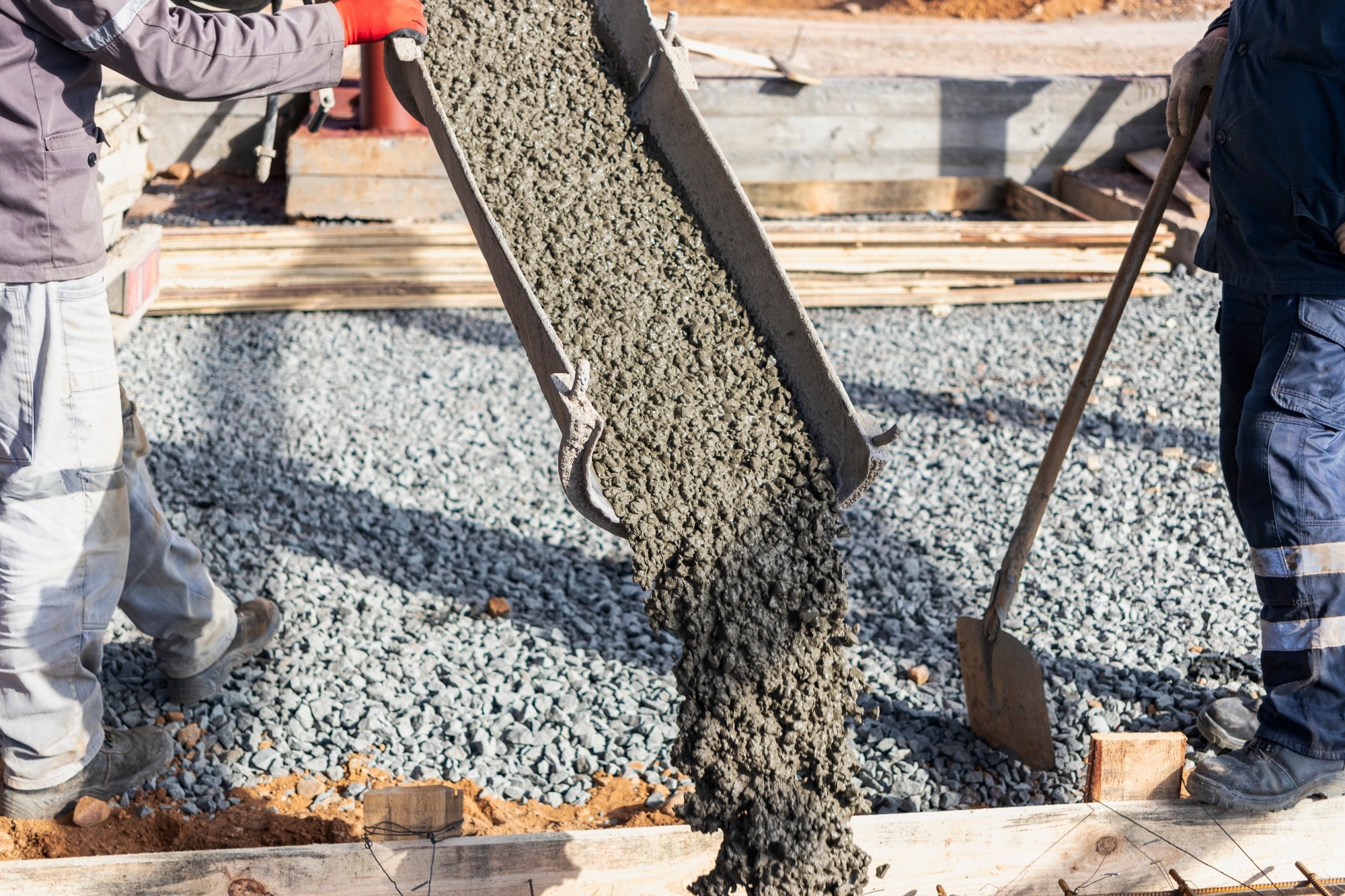 By Nidhi DhullReviewed by Susha Cheriyedath, M.Sc.Oct 22 2024
By Nidhi DhullReviewed by Susha Cheriyedath, M.Sc.Oct 22 2024A recent article published in Sustainable Chemistry & Engineering proposed a ZeroCAL pathway that uses calcium carbonate (CaCO₃) as a calcium source to produce hydrated lime (portlandite, Ca(OH)₂) at ambient conditions, while significantly reducing CO₂ emissions. This approach can contribute to decarbonizing the cement industry, as Ca(OH)₂ serves as a zero-carbon precursor for both cement and lime production.
 Study: ZeroCAL: Eliminating Carbon Dioxide Emissions from Limestone’s Decomposition to Decarbonize Cement Production. Image Credit: Another77/Shutterstock.com
Study: ZeroCAL: Eliminating Carbon Dioxide Emissions from Limestone’s Decomposition to Decarbonize Cement Production. Image Credit: Another77/Shutterstock.com
Background
Concrete, the second most used material worldwide, relies on Portland cement (PC) as its binding agent. However, producing one ton of PC generates approximately one ton of CO₂ emissions. These emissions arise from two sources: around 60% come from the thermochemical decomposition of calcium carbonate (CaCO₃) to produce calcium oxide (CaO), known as process emissions, and about 40% result from burning fossil fuels to heat the kiln to around 1500°C for clinkering reactions.
While using renewable heat sources can reduce emissions, it is not enough to fully decarbonize PC production. A complete solution also requires replacing, displacing, or transforming limestone as the CaO source. To address this, various methods have been developed to decarbonize PC production using non-carbonate calcium-rich materials like fly ash, steel slag, and basalt, which avoid CO₂ emissions.
However, these alternatives face challenges, such as limited feedstock supply and difficulties in matching the chemical composition of traditional PC. To overcome these issues, this study proposes a new approach that uses limestone in an aqueous electrochemical process to produce portlandite (Ca(OH)₂), a zero-carbon feedstock for PC production.
Methods
The ZeroCAL process consists of dissolution, separation/recovery, and electrolysis stages. First, CaCO3 is dissolved in a chelating agent, ethylenediaminetetraacetic acid (EDTA). Subsequently, calcium enrichment and separation are achieved via nanofiltration (NF), which separates the Ca-EDTA complex from the accompanying bicarbonate (HCO3–) species.
A calcium-enriched stream is then produced by decomplexing Ca from EDTA, followed by rapid precipitation of Ca(OH)2 using electrolytically generated alkalinity. These reactions occur in a seawater matrix, yielding coproducts such as HCl and NaHCO3, originating from electrolysis and limestone dissolution, respectively.
Calcium precursors included an analytical-grade calcite sample and high-purity limestone rock. EDTA-containing solutions were prepared from solid H4EDTA and NaOH powders. Eight commercial NF membranes were selected for the separation steps based on their performance.
Solid-phase analysis was performed on the prepared powders, with a light scattering analyzer used to determine particle size distribution. The powders were also characterized by X-ray fluorescence, thermogravimetric analysis, X-ray diffraction, and Fourier transform infrared spectroscopy.
In the solution-phase analysis, inductively coupled plasma optical emission spectrometry was used for multi-elemental analysis to quantify Ca and Na concentrations. Volumetric titrations measured dissolved EDTA, the Ca-EDTA complex, and dissolved inorganic carbon (DIC). Chloride concentrations were determined using the iron(III) thiocyanate method and ultraviolet-visible spectrophotometry.
Gas chromatography quantified CO2 evolution during gas-phase analysis. Additionally, thermodynamic modeling of solid- and solution-phase equilibria was conducted using Gibbs Energy Minimization-Selektor software.
Results and Discussion
The ZeroCAL process involved extracting calcium from limestone, separating it from CO2 in solution while preventing CO2 degassing, and electrolytically precipitating Ca(OH)2. Stoichiometric analysis revealed that producing 1 ton of Ca(OH)2 required 1.35 tons of CaCO3, 1.09 tons of water, and 0.79 tons of NaCl.
Approximately 75% of the NaCl used as the electrolyte was recycled during the process. Moreover, nearly 100% of the EDTA was recovered and reused, significantly reducing the need for additional reagents. For each ton of Ca(OH)2 produced, the process coproduced 0.54 tons of O2, 68 kg of H2, 0.49 tons of HCl, and 1.13 tons of NaHCO3. The hydrogen could be co-combusted with oxygen to heat the cement kiln or generate electricity, thus offsetting energy demands.
Approximately 80% of the HCl was reused within the process for EDTA recovery and pH conditioning. The carbonate stream, in the form of NaHCO3, could either be discharged into water streams for carbon storage or recovered as dilute soda.
CO2 evolution analysis indicated an exceptionally low CO2 intensity. Specifically, emissions amounted to only 1.5% of the total mineralized CO2 contained in limestone when dissolution was carried out at a slightly alkaline pH of 9.5, and a two-stage nanofiltration (NF) was employed for efficient Ca/CO2 separation.
Overall, the ZeroCAL process achieved more than a 98% reduction in process-related CO2 emissions, though it required approximately twice the total energy demand of conventional lime manufacturing or limestone decarbonization.
Conclusion
Overall, the researchers successfully established the proposed ZeroCAL approach as a process-emissions-free pathway to decarbonize PC production using limestone as a feedstock. In-situ electrolytic acid/base generation induced a self-contained pH-swing process, wherein EDTA-promoted CaCO3 dissolution while preventing CO2 exsolution.
Subsequent NF enabled effective Ca/CO2 separation, process water recycling, and scalable discharge of CO2 in the form of aqueous HCO3- at sufficient alkalinity so that CO2 could be stored durably and permanently in the near-surface environment.
Under optimized configurations, seawater, electricity, and limestone were the only inputs to the ZeroCAL process. Thus, electrification and hydrogen-based kiln heating of PC production are promising pathways to decarbonize cement.
Journal Reference
Leão, A. et al. (2024). ZeroCAL: Eliminating Carbon Dioxide Emissions from Limestone’s Decomposition to Decarbonize Cement Production. ACS Sustainable Chemistry & Engineering. DOI: 10.1021/acssuschemeng.4c03193, https://pubs.acs.org/doi/10.1021/acssuschemeng.4c03193
Disclaimer: The views expressed here are those of the author expressed in their private capacity and do not necessarily represent the views of AZoM.com Limited T/A AZoNetwork the owner and operator of this website. This disclaimer forms part of the Terms and conditions of use of this website.